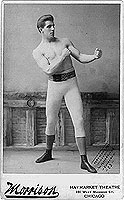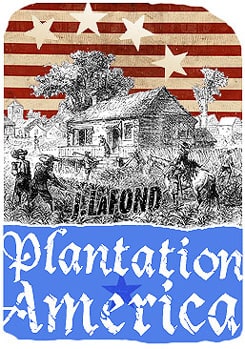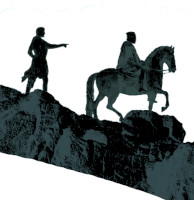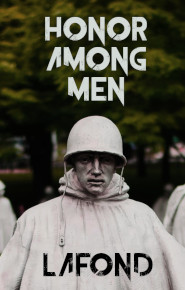Psiloi: light troops armed only with club and stones, would be of a class so low—perhaps slaves—that they might operate barefoot. They would throw baseball sized-stones from mid range, attempt to get around behind the enemy and would be used primarily as scouts and for pursuit. They may be armed with small knives as well.
The Peltast is the oldest form of human warrior, gong back at last 40,000 years, and remaining in operation on most continents until the 19th Century. He hunted the Neanderthal to extinction. The most common type of peltast was a Thrakian, who were imitated by the lower class of the more civilized communities. Asiatic forces employed peltasts from among their barbarian levies. This fighter type thrived in rugged forested lands. The most feared peltasts were the Agrianians from north of Thrace. These would later be Alexander the Great’s most effective infantry force. A force of peltasts would defeat a Spartan company in the late 400s. Hoplites with brains would fear them. And in any adventure set in the interior peltasts would be the main and most effective infantry force.
A peltast’s primary armament was a light hide-covered crescent shaped pelte [shield], an atlatl [casting hook, most likely of antler], and a number of darts ranging from a handful of five, to a case of perhaps 20. Some peltasts would use cords attached to their darts instead of a throwing stick for added velocity. The darts themselves would range from arm length to leg length, and might be a full sized javelin.
This author’s thought is that a unit of peltasts would employ men specialized in the use of and armed with a certain length and weight of dart, and that the unit commanders would deploy them accordingly for different terrain, ranges, and enemy equipment. Peltasts were so effective with their darts that no mention is made of their side arms. I suspect that various types were used. I would have my stronger longer ranged darters armed with a sica or other slashing sword. The smaller closer range darters might have daggers or knives. These fellows could come in under the fire of the bigger men casting the longer darts, then cast theirs as the big men advanced with swords, and retreat through their open order formation to reload. A third type of mid range peltast might serve as a flanker armed with a cleaver. The ways in which one could organize this troop type for battle are effectively frightening for the plodding heavy foot soldier.
Don’t under estimate the men who covered Xenophon’s ass when he and the 10,000 fought their way out of Persia, or who conquered Afghanistan for Alexander. The peltast was the ancient Hellenic equivalent of the current enemy of the world’s conventional militaries: the AK-47 armed warrior in his SUV with an RPG.
The Lithoboloi, or stone-throwers, or slingers, were generally shepherds who would also serve as soldiers, employing the stone bullet casting strap they used to drive of wolves and lions from their flocks to harry the enemy. Strikes to the head are deadly, and to the helmeted head would still disable or concuss. A slinger would employ a small round shield strapped to his forearm and a light blade as a side arm. Being fleet of foot over rough terrain and having an excellent arm, the slinger is feared in man-to-man combat. Expect a slinger to use a short slashing sword or even sickle such as a Drepanon. During the Classical Period the isle of Rhodes was renowned for mercenary slingers. In this period they will more likely be pirates or bandits.
A Toxeutes, or Archer, was a rare man on the Hellenic battlefield, except for the men of Crete, who were mercenaries and could be expected to be armored and of good size, probably fighting with an aor and phasganon if caught in a contact situation. The Athenian police, who were dismounted Skythians, who shall be described under Horses and Hulls, were a civic and home defense force. The vast majority of military archers were Asian, and were predominantly mounted. Archery as an art was practiced by Hellenic individuals, including some athletes who used bow bending as a strength training regimen. But the military use of the Hellenic archer faded with the demise of the chariot.











